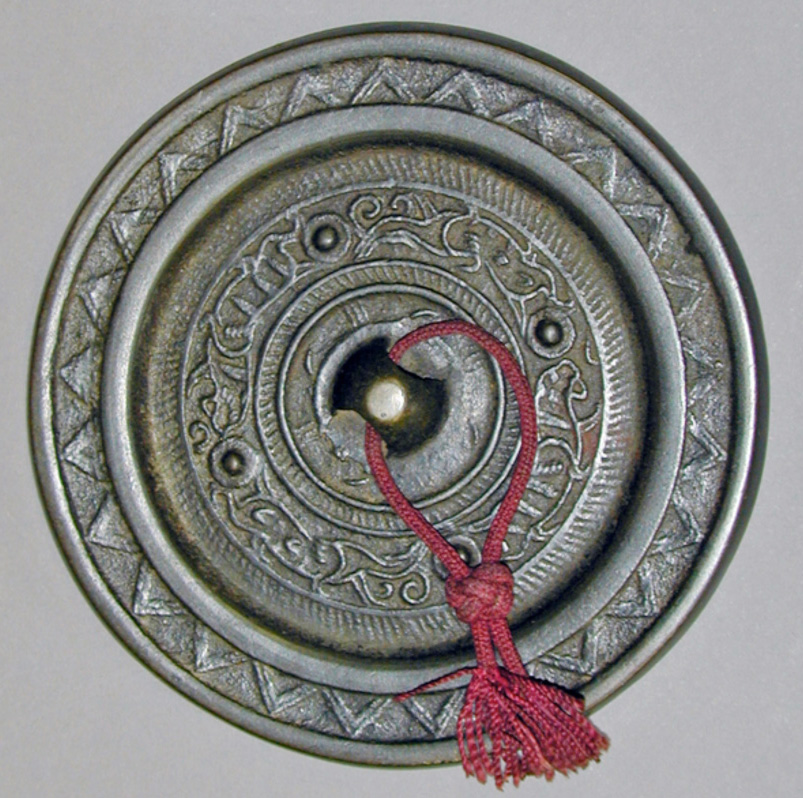Bronze mirror
Japan, c. 500–1600
 Purchased from Edward Lovett in 1893; 1893.73.2Bronze mirrors were introduced into Japan from China and Korea during or before the Yayoi period (from 300 BC). Made using the lost-wax technique they were originally symbols of religious authority. This example is of traditional construction, with a central knob handle and silk cord, and a circular decoration featuring a tiger hunting its prey. The motif of a tiger chasing a deer dates back to at least the Chinese Han Dynasty (206 BC–AD 220), denoting the traditional autumn hunt.
Purchased from Edward Lovett in 1893; 1893.73.2Bronze mirrors were introduced into Japan from China and Korea during or before the Yayoi period (from 300 BC). Made using the lost-wax technique they were originally symbols of religious authority. This example is of traditional construction, with a central knob handle and silk cord, and a circular decoration featuring a tiger hunting its prey. The motif of a tiger chasing a deer dates back to at least the Chinese Han Dynasty (206 BC–AD 220), denoting the traditional autumn hunt.
By the Nara period (AD 710–794) Japanese mirrors had become everyday objects and mirror-makers began to decorate them with native Japanese motifs such as cherry blossom and pine. The tiger, a symbol of protection and guardianship in China, also entered Japanese symbolism where it represented the feminine yin (as opposed to the dragon which stood for the male yáng). Mirrors decorated with such feminine symbols or lucky ones – such as the tortoise, signifying longevity – were considered suitable wedding gifts for a bride.
